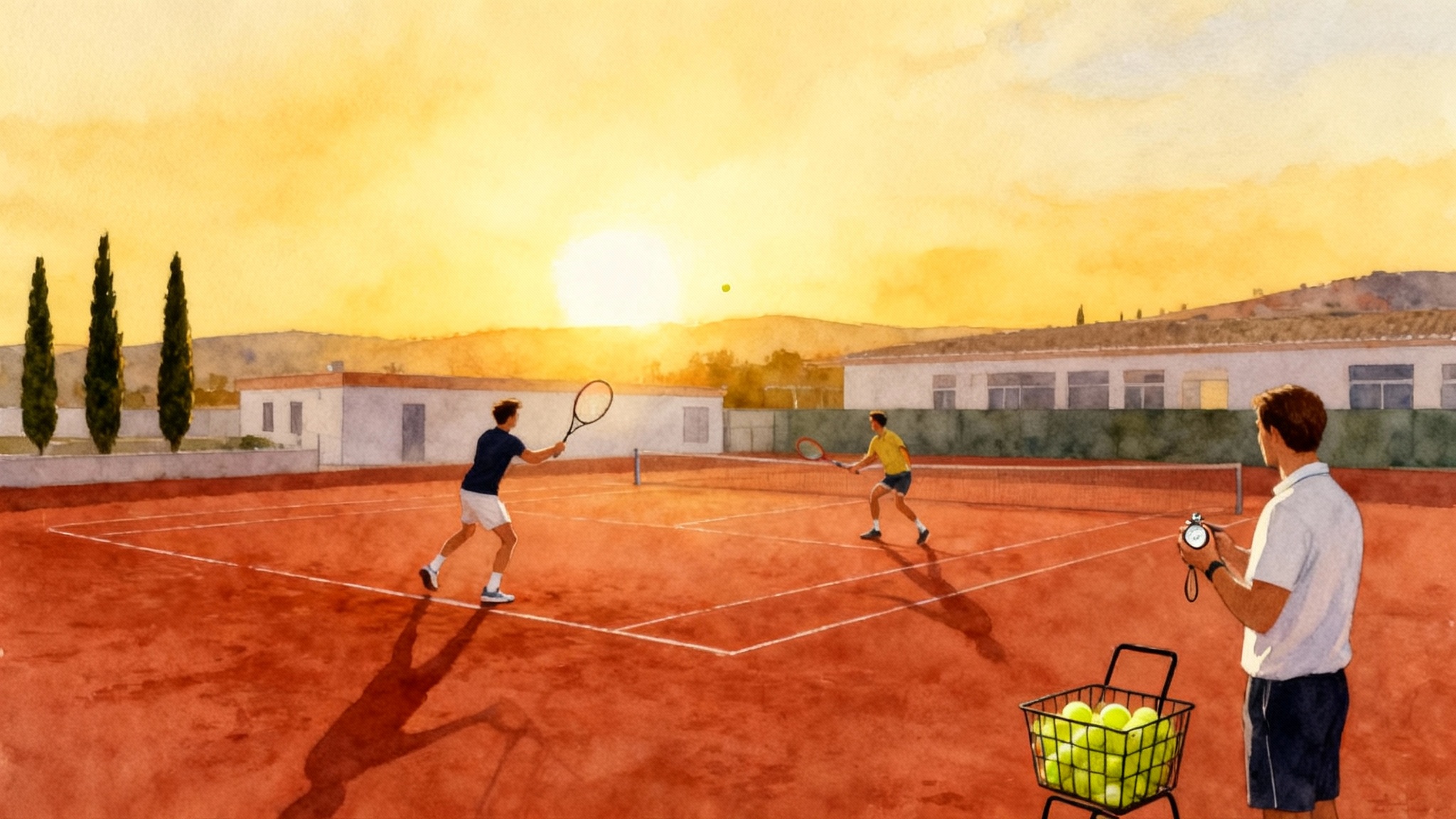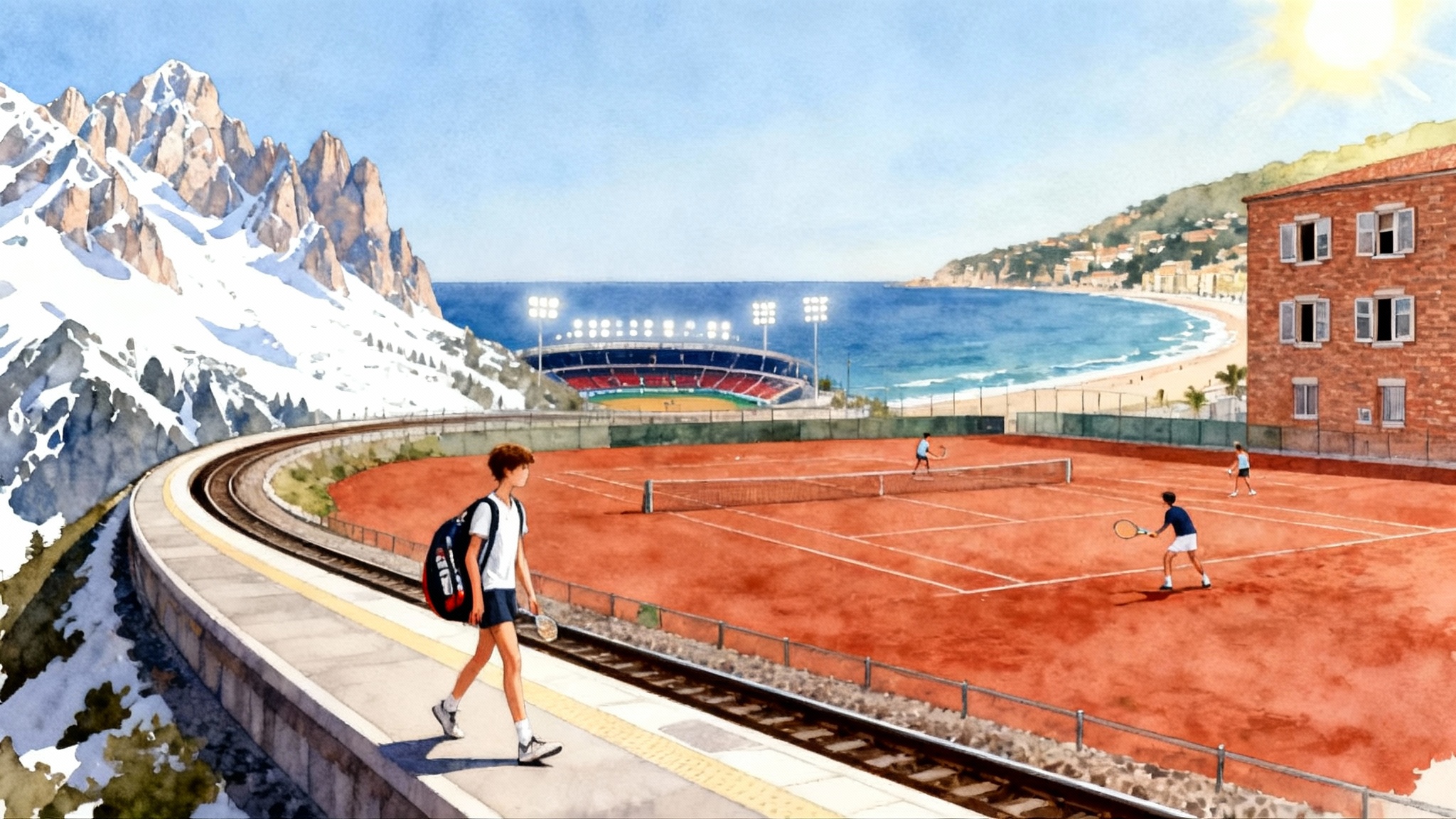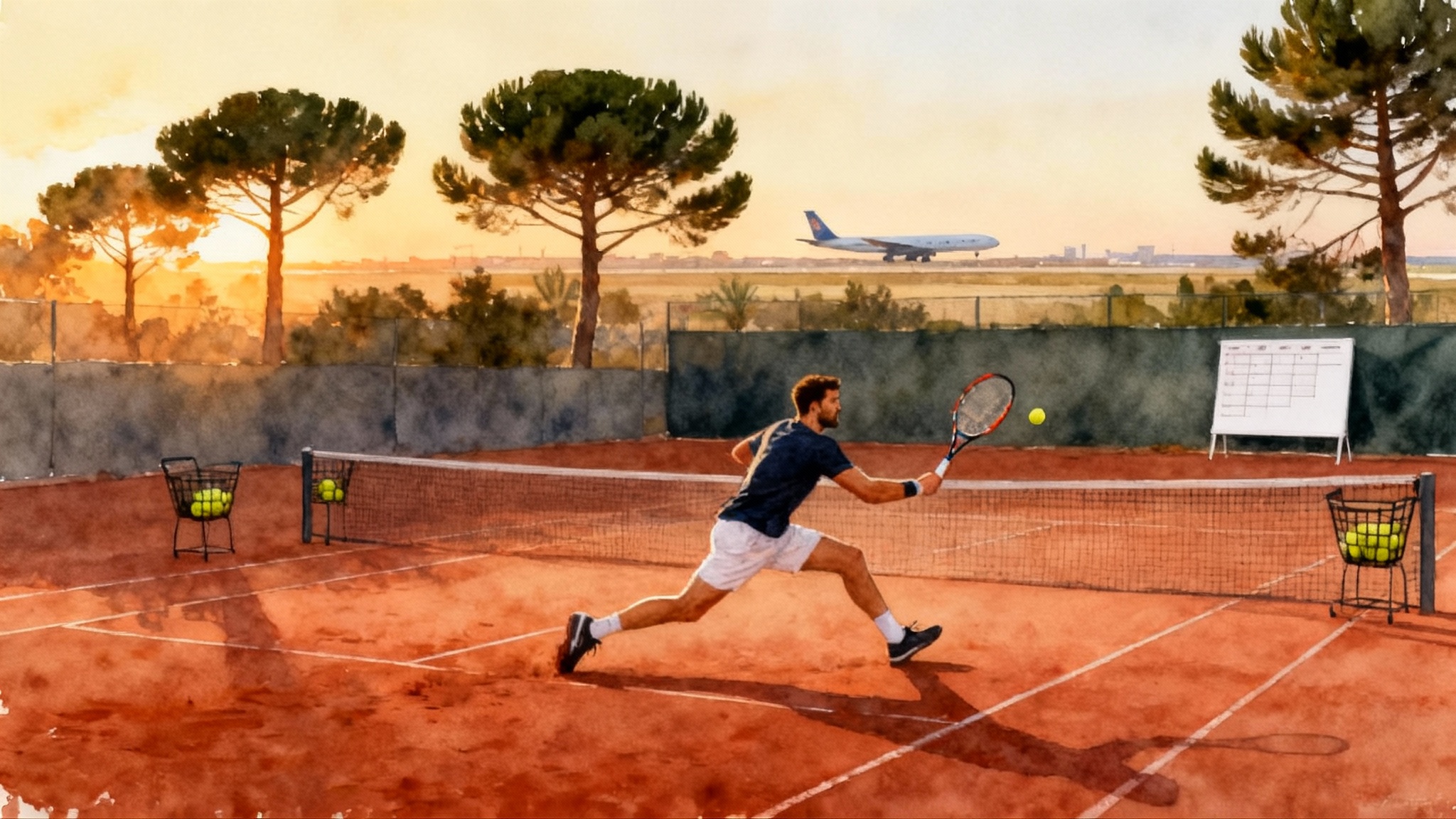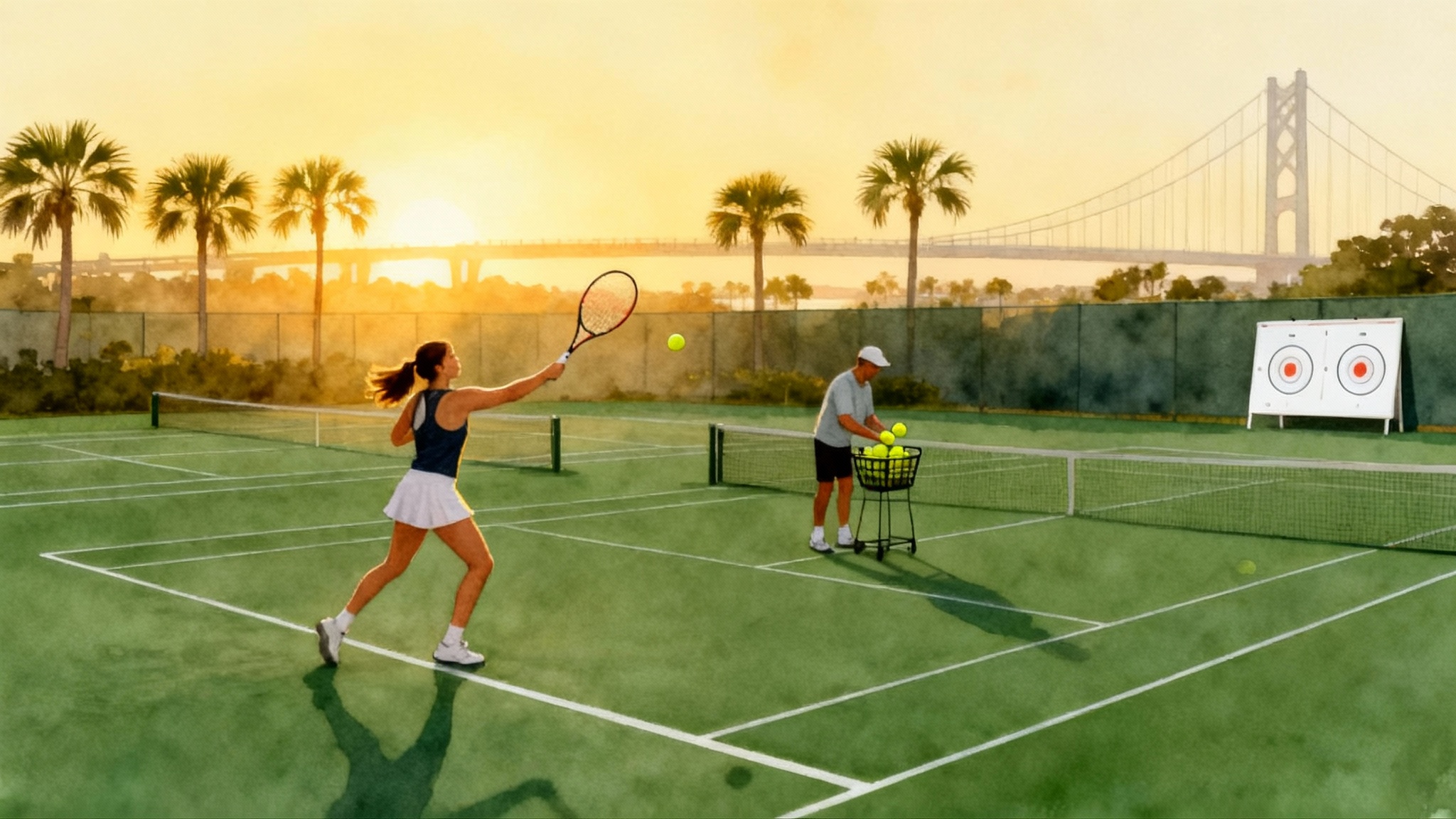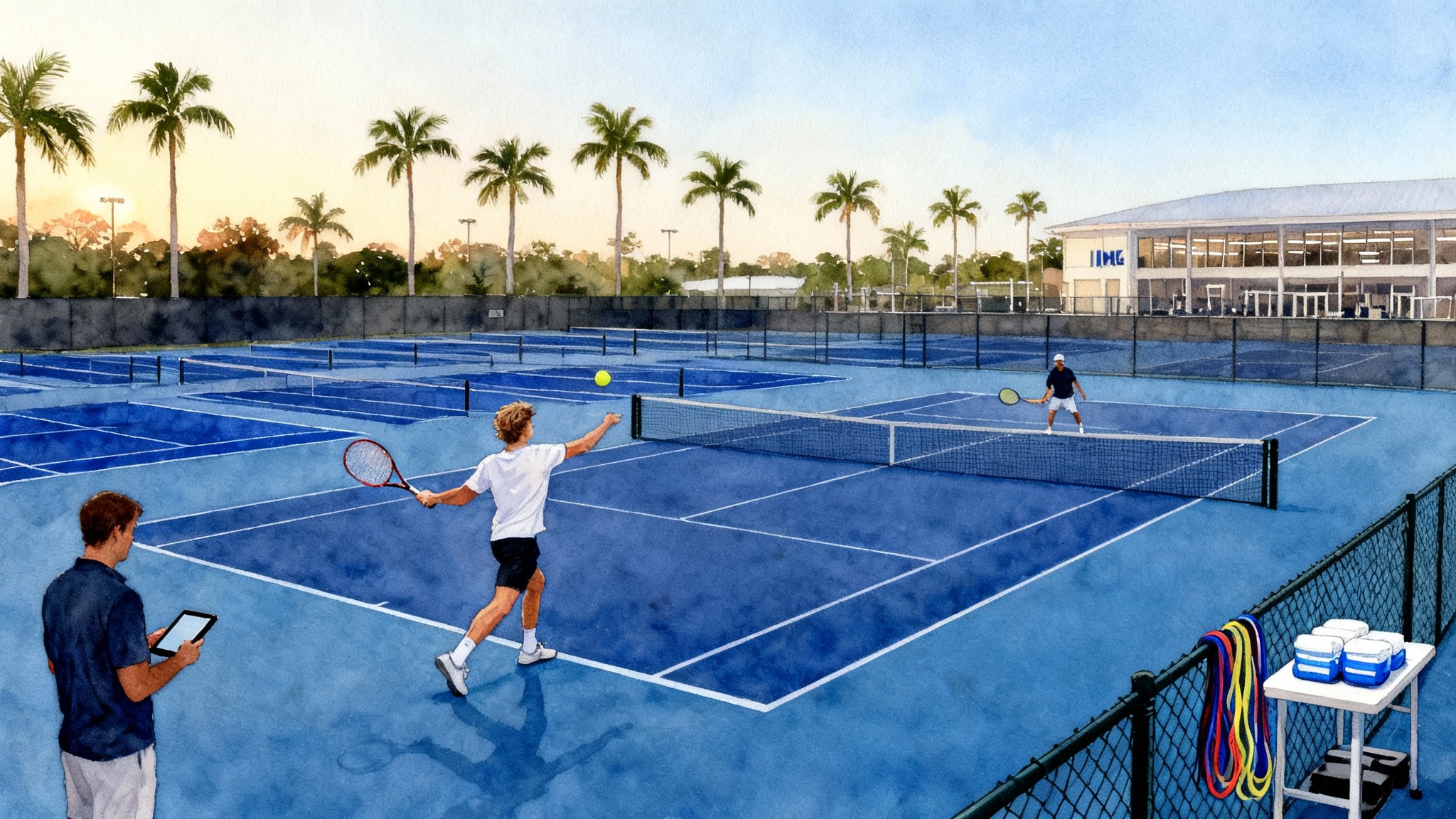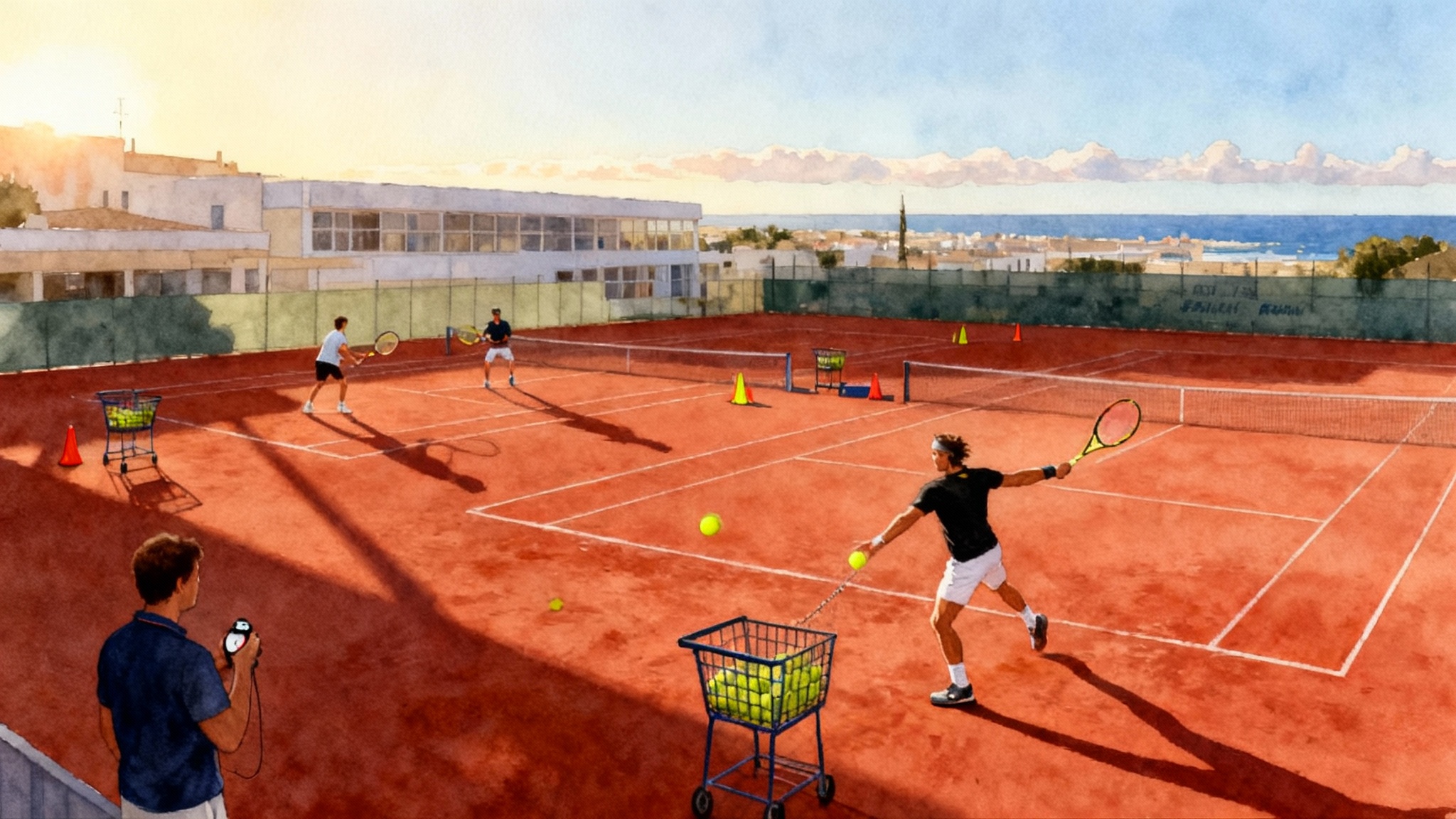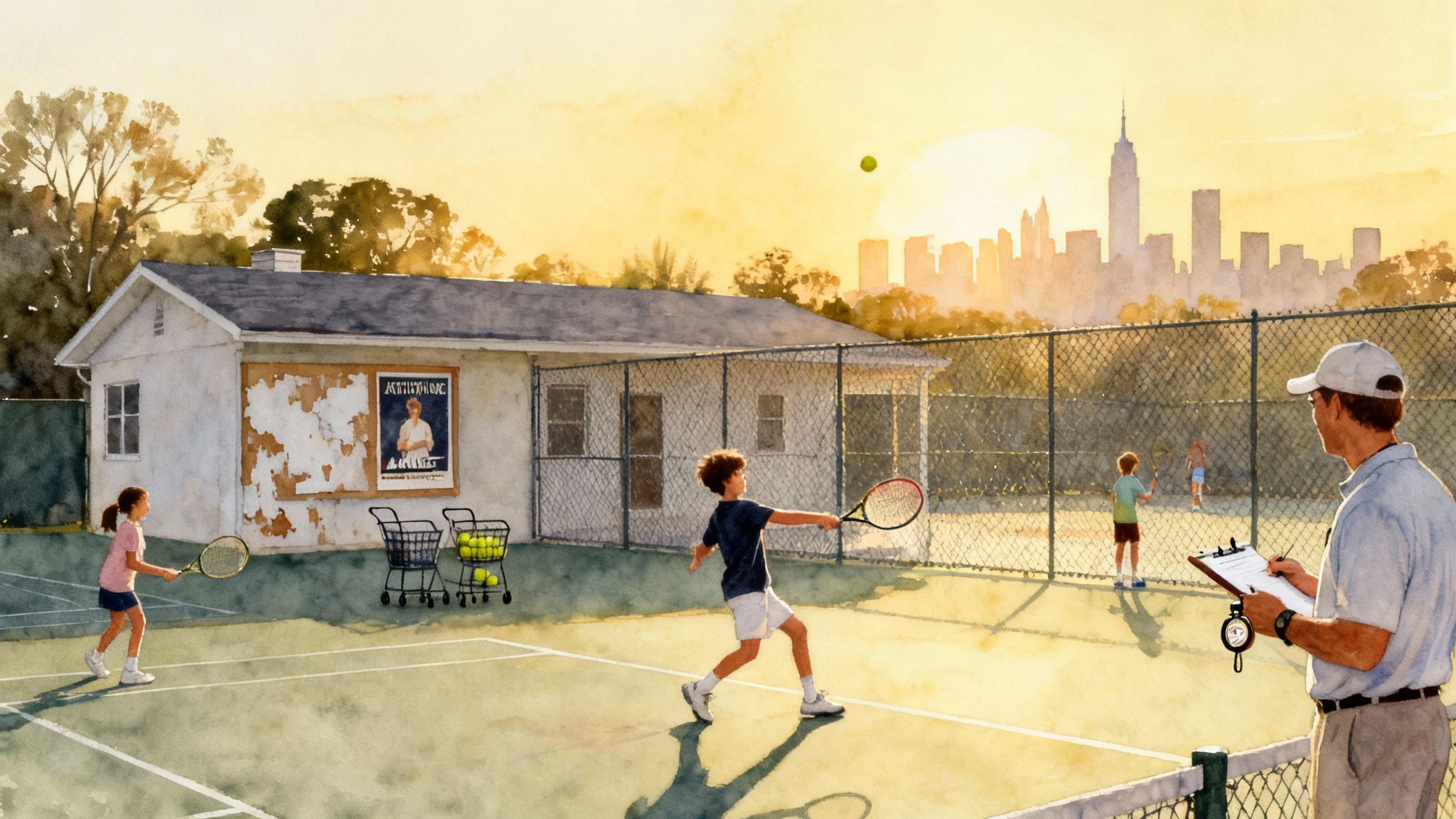From Belgrade to Oberschleissheim: How Pilic Forged Djokovic
At 12, Novak Djokovic left Belgrade for Niki Pilic’s academy in Oberschleissheim. This lessons-first look explains why his family chose that path, how Pilic’s structure shaped his game and mind, and what today’s parents can copy with confidence.
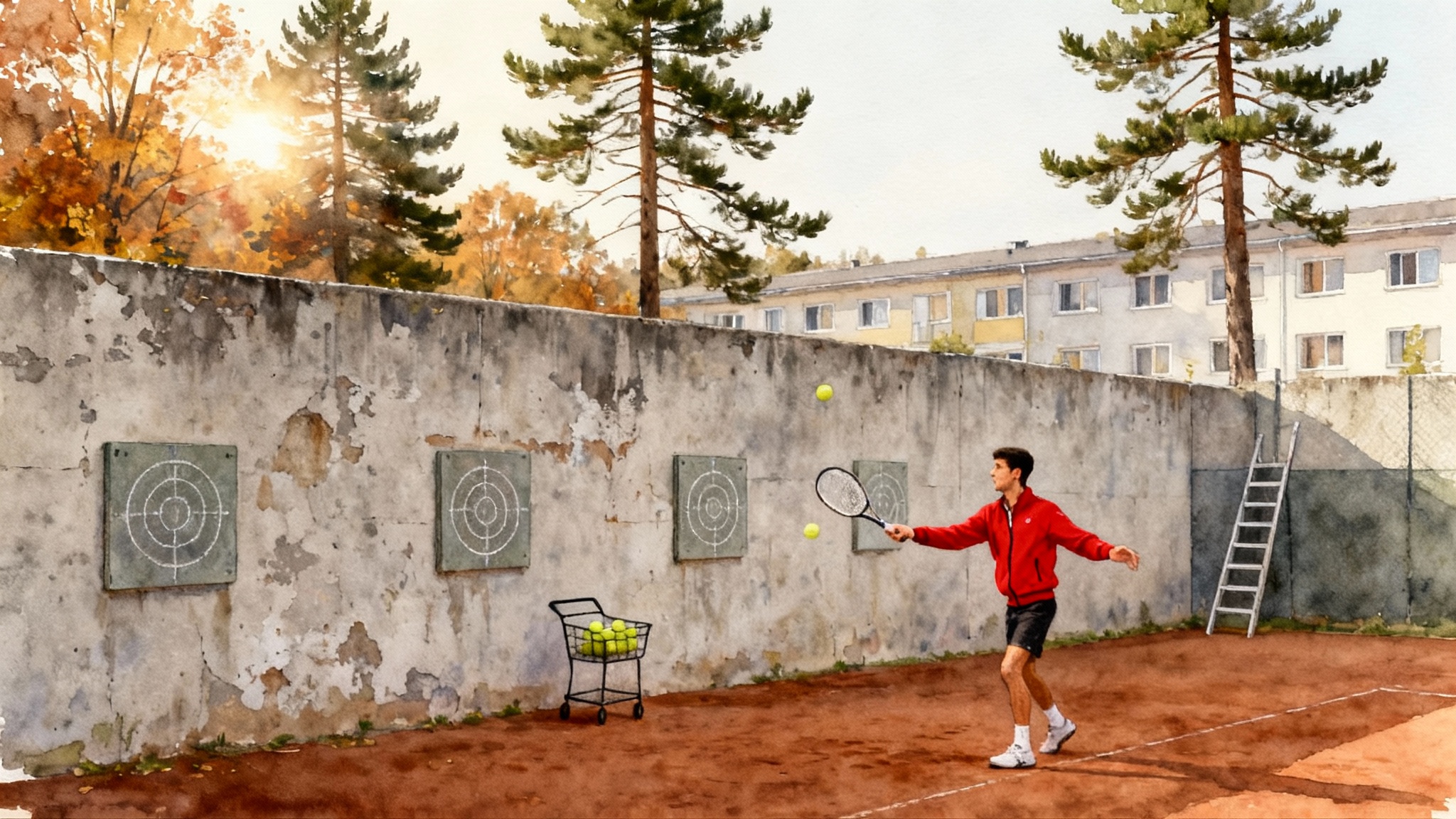
The day discipline became a compass
Tributes to Niki Pilic often circle the same theme: discipline turned into opportunity. The former Roland Garros finalist and pioneering Davis Cup captain built a small factory of habits in Oberschleissheim, a quiet suburb north of Munich. Inside its fence lines a 12-year-old from Belgrade learned how to turn chaos into routine, and routine into results. Pilic’s legacy helps explain how a boy from a bombed city became an all-time champion.
This article walks you through why Novak Djokovic left home so early, what he actually did at the Pilic Academy, how Jelena Gencic’s mentorship meshed with Pilic’s rule book, and the specific choices parents can copy now. The goal is not nostalgia. It is an operating manual.
Why leave Belgrade at 12
Context matters. Serbia in 1999 faced air raids and uncertainty. At home in Belgrade, Djokovic trained with Jelena Gencic, a former top player and polymath coach who built his foundations in strokes, attention, and curiosity. She saw that for him to keep growing he needed a higher and steadier level of daily competition. Germany had courts, structure, and match volume. The family chose a boarding-block path that balanced school periods in Serbia with training blocks in Oberschleissheim. That blend turned a drastic move into a manageable rhythm rather than a one-way ticket.
For families exploring Munich today, a practical point of comparison is Munich’s Ghedina Tennis Academy, a coach-led, club-integrated option that mirrors the value of structure over branding.
Parents reading this face a gentler world, but the same question: when does the training ecosystem at home stop matching your child’s rate of improvement? If the answer is “now,” then the next question is how to choose an academy that delivers progression, not logos.
What Pilic’s system looked like from the inside
Pilic’s academy culture was built on three dials: repetitions, movement, and match play. Picture three big knobs on a mixing board. Coaches turned them up or down each week, but they were always on.
- Repetitions: Wall sessions were a daily metronome. Players stacked 10 to 15 minute blocks of forehands, backhands, and volleys against a chalk‑boxed target on the wall. The aim was not heroic pace. It was rhythm, height, and depth. A typical day might include 1,000 to 1,500 ball contacts before lunch, with feedback on contact height and recovery steps.
- Movement: Footwork came from ladders, cones, and short-burst shuttles. The pattern work emphasized split steps, the first two steps out of the hit, and recovery lines back to neutral. The point was to make the first move automatic so the brain could think about the ball, not the feet.
- Match play: Sets against varied styles happened almost every afternoon. Scoreboard stress was part of training, not a weekend add-on. Coaches tracked first-serve percentage, depth tolerance on rally balls, and how often players changed direction down the line.
Pilic’s staff enforced rules that looked ordinary yet produced compounding gains. Shirts tucked in. Arrive early. Water and strings ready. Stretch before and after, even if no one checked. The standards felt small day by day. Over months they made quitting the wrong thing to do, which is what discipline really is.
The fingerprints on Djokovic’s pro game
Djokovic’s style is not an accident. You can trace tour-level patterns straight back to the academy floor.
- Baseline neutrality before aggression: Those wall blocks and depth targets taught him to live in neutral. Most balls do not end points; they set up the next one. Djokovic built patience around a heavy, waist‑high rally ball that pushed opponents back. When a shorter reply came, the change of direction down the line was the release.
- Return position as a weapon: Pilic’s coaches often staged return games as stand‑alone drills. Players varied position by server, score, and surface. That flexibility is why Djokovic can return deep from the fence against big servers, then step in on second serves to take time away.
- Two‑handed backhand confidence: Targets at shoulder and hip height on the wall hardened his backhand timing through different contact zones. The result on tour is the down‑the‑line backhand that flips defense into offense without changing his body language.
- Sliding on hard court: Movement blocks taught braking and recovery angles, not just speed. Learning to slide under control on hard courts saved energy and kept him balanced when stretched, which is why his next ball after a slide is often deep and neutral rather than short and defensive.
- Momentum resets: Afternoon set play embedded tiny rituals between points. A breath. A bounce cadence. A glance at strings. Those rituals show up years later under Grand Slam lights as stress valves.
None of these patterns are magic. They are repetitions aligned with a scoring model: earn errors with depth, then take clean lanes, and protect serve with first‑ball control.
How Gencic and Pilic worked in tandem
Jelena Gencic started the engine. She taught Djokovic to see patterns and to love practice. Her mental sessions were concrete. Visualization, language, music, and reading were tools to train attention on purpose, not vague mantras. Pilic added the factory floor. He insisted on standardized days and accountability to the scoreboard.
You can think of it as software and hardware. Gencic wrote the mental code. Pilic built the physical machine that ran it every day. For contrast on academy models that also scale habits into tour skills, see how Equelite forged Alcaraz and study Jannik Sinner’s playbook.
If you want a single takeaway from their combined influence, it is this: mental toughness is not a mood. It is logistics. Sleep, schedule, drill counts, and clear rules reduce randomness, which makes focus easier to choose.
What today’s parents can copy
You cannot clone Djokovic, but you can copy the choices that made his progress predictable. Here is a step-by-step playbook.
1) Decide when to leave home
Use three tests. Your child should meet at least two for a training block away to make sense.
- Competition gap: Your player wins local matches comfortably yet struggles in qualifying rounds at national events. The problem is not strokes; it is variety and speed of ball.
- Practice density: At home you cannot build three to five high‑quality practice sessions per day that include real sets. Courts, partners, or coaching bandwidth cap the week.
- Attention bandwidth: School and commute chew up the day to the point that practice quality drops below 90 minutes of real focus.
If that is your reality, start with a short block. Two to six weeks beats a blind, year‑long relocation.
2) How to evaluate an academy
Do not be hypnotized by superstar photos on the wall. Audit the daily structure first. Sit in discreetly and watch.
- Drill to match ratio: Look for two technical sessions and one match‑play block daily for players aged 12 to 16. That creates both pattern learning and stress rehearsal.
- Wall culture: There should be a dedicated wall with targets and a whiteboard for contact counts. If the wall is a decoration, discipline is too.
- Metrics: Coaches should track first‑serve percentage, rally‑ball depth, and unforced‑error types. Scoreboard clips and notes should be part of the debrief, not just vibes.
- Movement blocks: Ladders and cones are fine, but watch the coaching. Do they teach recovery lanes and braking angles or just speed for show?
- Coach continuity: Ask who actually runs your child’s court for most sessions. Star coaches help with diagnosis, but progress comes from the coach who sees your child four hours a day, four days in a row.
- Medical and school support: Is there a plan for soreness, prehab, and illness? Can the academy interface with your school program without hand‑waving?
Red flags: chaotic daily boards, lots of idle time between sessions, praise without instruction, and mystery invoices.
3) Financing the path without luck
Djokovic’s family combined sacrifice, partial scholarships, and block scheduling. You can do a modern version.
- Block scheduling: Book two to six weeks at a time, then return home for school and local events. Blocks limit living costs and allow family recovery.
- Partial scholarships and work‑study: Many academies award partial reductions tied to national ranking or work roles like stringing and court setup. Ask for written terms and revisit them every term.
- Housing options: Compare dorms, vetted host families, and short‑term rentals. Host families are often best for younger players if vetted thoroughly.
- Sponsors that are real: Local businesses will back travel and gear in exchange for junior clinics or social posts. Put deliverables in a simple one‑page agreement and set dates.
- Travel smart: Pair with one teammate to split housing and rides. Book training blocks in shoulder season when housing costs drop.
A sample budget for a four‑week block might look like this in United States dollars: tuition 2,000 to 3,500, housing 1,000 to 2,000, food 600 to 800, local transport 300, stringing and supplies 200. Adjust for region and level of service.
4) Scheduling the work
For ages 12 to 16, think in 12‑week macrocycles with two training blocks and one competition block.
- Weeks 1 to 4, training block at academy: Build volume in wall work, movement, and controlled matches. Fitness is light and frequent.
- Weeks 5 to 8, home integration: Maintain wall work six days per week, two structured hitting sessions and one practice set most days, local tournaments on weekends.
- Weeks 9 to 12, competition block: Two to four tournaments, one short top‑up academy week between events if possible.
A daily template at the academy might be: morning movement and wall, mid‑morning technical baskets, lunch and school hour, afternoon match play, cooldown and journaling. The journaling matters. Players should note three controllable targets for tomorrow, two things they did well, and one adjustment.
5) Balancing academics
Djokovic split time early, spending months in Germany then returning to Belgrade for school. You can borrow the split idea without the stress. Use an accredited online program or a school that supports temporary leaves and has a designated liaison. Require a one‑page weekly plan that covers assignment due dates, reading blocks, and test prep. Set a daily study block on the schedule board just like a hitting session. If school work only lives in the “after practice” slot, it will lose.
If your player struggles to self‑manage, hire a tutor for two hours per week to plan, not to solve problems. The aim is executive function, not spoon‑feeding.
The boarding‑block path, explained through Djokovic’s timeline
The boarding‑block path gains power when you see it in a real timeline. Djokovic’s move to Germany did not mean a permanent departure at age 12. It meant recurring blocks that matched his growth and the family’s capacity. For a concise summary straight from his team, see Djokovic’s 1999 move to Munich. Note the rhythm: initial short stays, then back home for school, then return trips that extended as results justified them.
Apply that logic now. If your player improves during a four‑week block, the next block can stretch to six weeks. If the gains flatten, shorten and reassess. Progress should pay for more time, not the other way around.
What an academy still does best in 2025
- Peer density: Ten solid peers in your practice group beat a superstar who drops in for photos. Variety creates learning.
- Staff eyes: A small staff that tracks your player daily can see patterns weeks before a visiting specialist can.
- Scoreboard psychology: Daily sets in a low‑stakes environment teach momentum management that no basket drill can replicate.
- Logistics that reduce noise: When meals, courts, and partners are within a short walk, more of your child’s energy goes to learning and less to commuting.
Use academies for what they are: controlled environments that increase useful touches on the ball and decision reps under scoring pressure.
Copying Pilic anywhere
Even if you cannot travel, you can run a Pilic‑style week at home.
- Wall work: Five days per week, three 12‑minute blocks with clear targets. Start with 40 forehands crosscourt at a shoulder‑high box, 40 backhands at hip height, and 20 forehand volleys that must land past the service line.
- Movement: Three sessions per week of 20 minutes. Include split‑step timing drills, two‑step acceleration, and recovery shuffles to center. Add a simple heart‑rate check to keep intensity honest.
- Match play: Two practice sets, four days per week. Track first‑serve percentage and the number of neutral‑ball errors inside the first four hits.
- Return lab: Twice per week, 20 minutes of returns only. Vary position by server and score call. The goal is depth and height, not winners.
- Routines: Teach between‑point breathing and a string‑straightening ritual. These are small but reliable tools when nerves spike.
Do not chase novelty. Chase consistency with numbers.
A note about star coaches versus structure
A marquee name can help early with credibility and diagnosis. Progress, however, happens in the quiet middle of the day with the coach who runs your player’s court. Ask academies for their daily staffing map. Who is writing the plan? Who is on the court at 10:00 and at 15:00? Who reviews video? If the answer is a rotating cast with no owner, the structure is not strong enough.
The enduring lesson of Pilic’s model
Niki Pilic was not the architect of Djokovic’s life. He was the builder who poured concrete. Jelena Gencic sketched the design. The Djokovic family found a way to pay for the land, one block at a time. Together they created a training world where the right things were normal. That is the lasting imprint of the academy model on a champion.
For modern juniors, the lesson is precise. If the world around you is noisy, build a smaller world you can control. Choose an environment that makes good decisions easier than bad ones. Track the work. Play sets. Learn to love the wall. If you do those things week after week, you will not guarantee greatness. You will guarantee growth. That is the only path greatness has ever recognized.
A smart close, grounded in action
Pilic’s legacy invites respect, not myth‑making. The responsible way to honor it is to copy the parts that still work. Leave home only when the local system cannot keep up. Evaluate academies by their schedule boards, not their posters. Finance training in blocks you can sustain. Guard school time with the same attention you give to serves and returns. Most of all, build habits that survive stress. That is how a teenager from Belgrade found his footing in Oberschleissheim. It is how your player can find theirs now.
